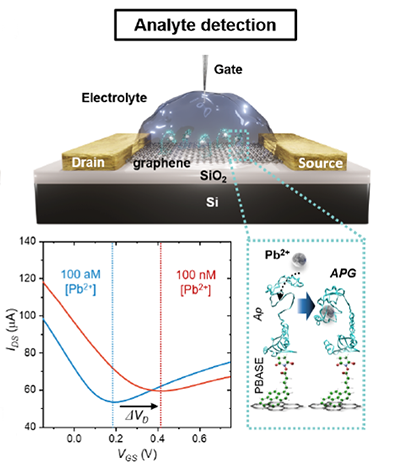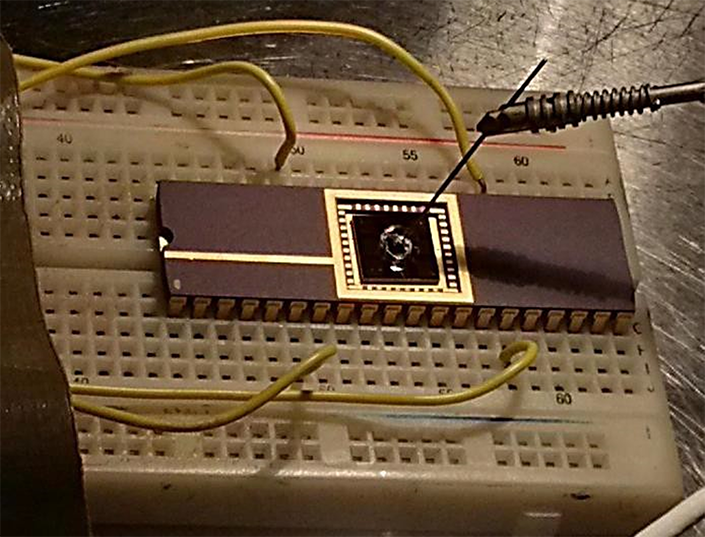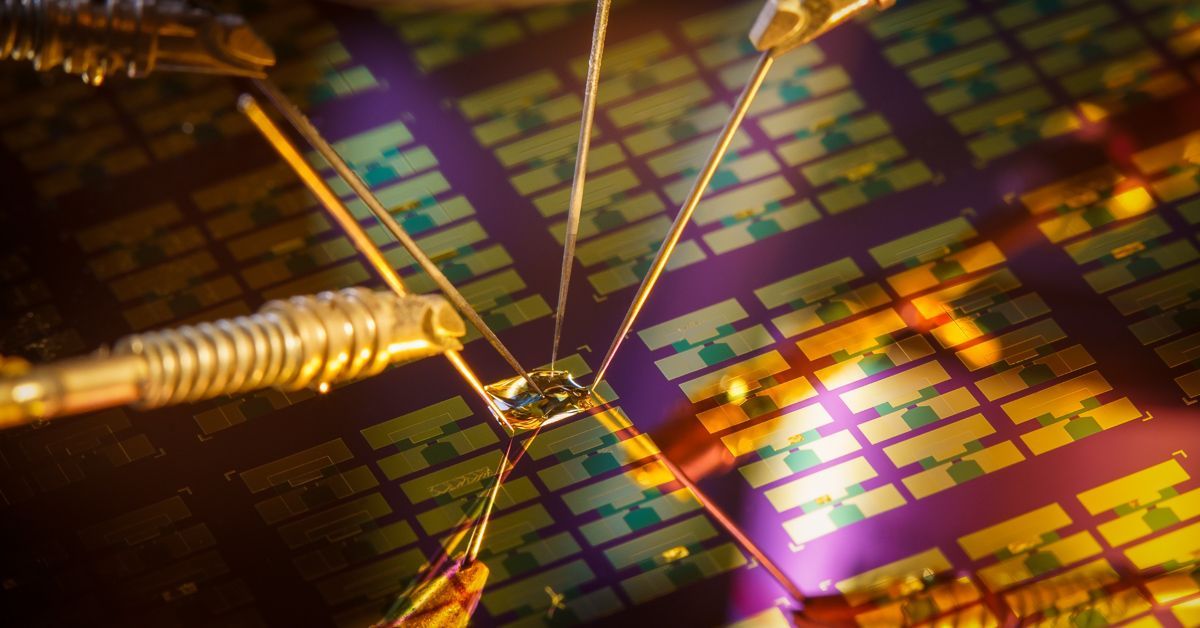Ultra-sensitive Lead Detector Could Significantly Improve Water Quality Monitoring
Story by:
Published Date
Story by:
Topics covered:
Share This:
Article Content
Engineers at the University of California San Diego have developed an ultra-sensitive sensor made with graphene that can detect extraordinarily low concentrations of lead ions in water. The device achieves a record limit of detection of lead down to the femtomolar range, which is one million times more sensitive than previous sensing technologies.
“With the extremely high sensitivity of our device, we ultimately hope to detect even the presence of one lead ion in a reasonable volume of water,” said Prabhakar Bandaru, a professor in the Department of Mechanical and Aerospace Engineering at the UC San Diego Jacobs School of Engineering. “Lead exposure is a serious health concern, and it has been indicated that a lead concentration at the level of parts per billion in drinking water could lead to pernicious outcomes, such as stunted human growth and development.”
The work is described in a paper published recently in Nano Letters.

The device in this study consists of a single layer of graphene mounted on a silicon wafer. Graphene, with its remarkable conductivity and surface-to-volume ratio, offers an ideal platform for sensing applications. The researchers enhanced the sensing capabilities of the graphene layer by attaching a linker molecule to its surface. This linker serves as the anchor for an ion receptor and, ultimately, the lead ions.
One of the key features of this work was making the sensor highly specific for detecting lead ions. The researchers used an aptamer, which is a short, single strand of DNA or RNA, as the ion receptor. These receptor molecules are known for their inherent selectivity toward specific ions. The researchers further enhanced the receptor’s binding affinity for lead ions by tailoring its DNA or RNA sequence. This ensured that the sensor would only be triggered upon binding to lead ions.
Achieving the femtomolar limit of detection was made possible by studying in detail the molecular events occurring on the graphene sensor’s surface. The researchers used a combination of experimental and theoretical techniques to monitor the stepwise adhesion of the linker to the graphene surface, followed by the binding of the receptor to the linker, and finally, the attachment of lead ions to the receptor.
The researchers analyzed thermodynamic parameters of the system such as binding energies, changes in capacitance, and molecular conformations and found that they played critical roles in optimizing the sensor’s performance. By optimizing each of these thermodynamic parameters, along with the design of the entire system, from the electronics and materials all the way down to the ion receptor, the researchers created a sensor that can detect lead ions with unprecedented sensitivity and specificity.
"The work truly exemplified collaboration and synergy among all contributors," said Bandaru. "The foundational device considerations and protocols were established by Yongliang Dong, who is presently working at LAM Corporation. Deependra Ban, a brilliant biochemist, designed the state-of-the-art aptamers used for lead detection. Shreyam Natani's keen insights and atomic force microscopy work yielded new perspectives. Alex Lee, the lead author, carried out the experimental work with unwavering persistence."
In addition to its superior sensitivity, the new sensor possesses other advantages over existing methods. Traditional techniques for detecting lead with high accuracy and sensitivity often rely on expensive instrumentation, which limits their accessibility for widespread use. Meanwhile, home kits, while more accessible, tend to be unreliable and exhibit a relatively poor limit of detection, typically within the micromolar range.
“The technology that we developed aims to overcome the issues of cost as well as reliability,” said Bandaru. “Our goal is for it to be eventually deployed in homes, given its relative ease of manufacture.”
While the technology is currently at the proof-of-concept stage, Bandaru hopes to one day implement it in real-world settings. Next steps include scaling up the production for commercial use, which will necessitate collaboration with industry partners.
Paper title: “Toward the Ultimate Limit of Analyte Detection, in Graphene-Based Field-Effect Transistors.” Co-authors include Alex W. Lee, Yongliang Dong and Shreyam Natani, UC San Diego; and Deependra Kumar Ban, Keck Graduate Institute.
This work was supported by the Army Research Office (W911NF-21-1-0041-(74813-MS)).

You May Also Like
Stay in the Know
Keep up with all the latest from UC San Diego. Subscribe to the newsletter today.




